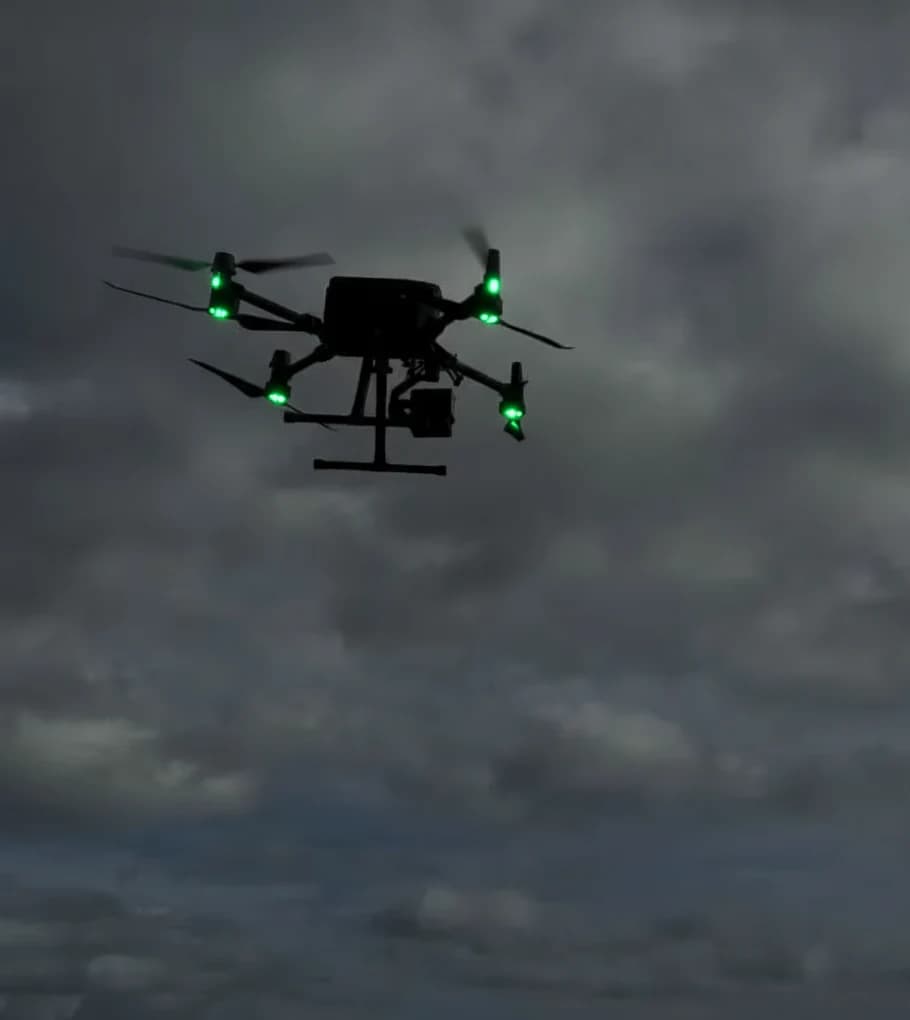
Looking up to see a drone hovering over your garden can be alarming. Is your neighbour violating your privacy, or are they within their rights?
In the UK, the answer isn't straightforward.
While drone pilots don't need your permission to fly over your property, they must follow strict CAA regulations. If they're watching you sunbathe or persistently buzzing overhead, you've got legal options.
But first, you'll need to understand where your rights begin and their freedoms end.
As a GVC-licensed commercial drone operator, I can tell you that the most common point of confusion for the public is airspace ownership. You don't own the air above your land, and that's a fundamental concept we have to operate with. Our training is heavily focused on risk assessment and respecting privacy, not just flying the drone.
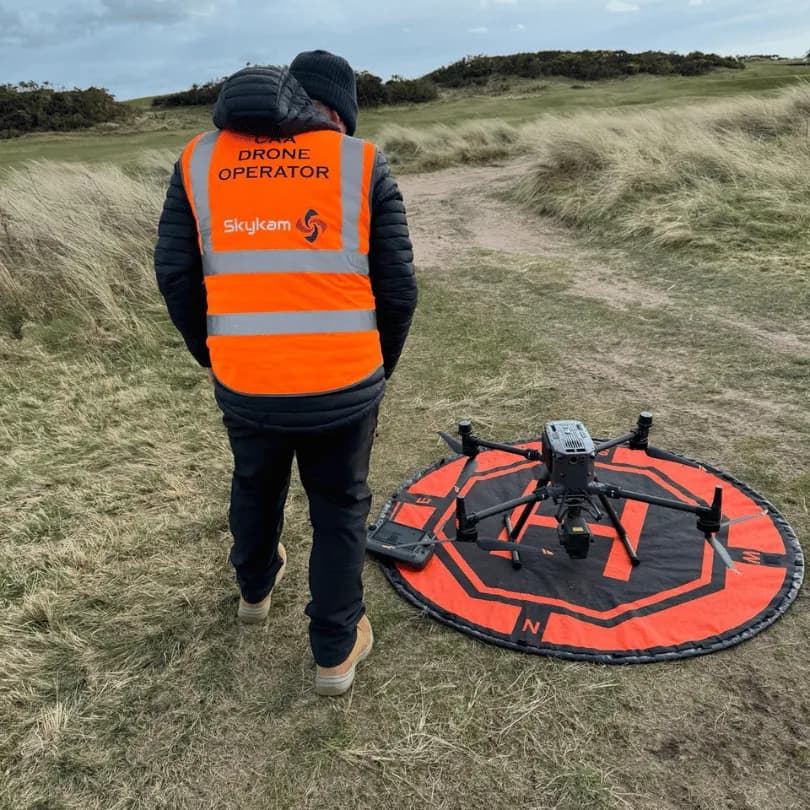
30 Second Summary
- Neighbours can legally fly drones over your garden in the UK without permission, but must follow CAA regulations
- Drones over 250g must maintain at least 50 metres distance from people, buildings, and private property
- Smaller drones under 250g have reduced distance requirements but must still respect privacy laws
- You can pursue legal action for harassment if drone flying causes significant distress or privacy violations
- Drone operators must comply with data protection laws when recording footage that captures identifiable people
UK drone laws regulate flights over private property, especially in residential areas
While drones have become increasingly popular in the UK, the drone laws governing their use over private property can be complex.
Under current UK regulations, you don't own the airspace above your garden, but drone pilots must follow strict rules when flying near residential areas.
Drone Category | Key Regulations Summary |
|---|---|
Sub 250g (e.g., DJI Mini Series) | No requirement to stay 50m from uninvolved people, but flying over them is not permitted under the new sub 250g drone laws UK. Operator ID is required if it has a camera. Must still follow the Drone Code and respect privacy. |
Over 250g (e.g., DJI Mavic 3) | Must not be flown within 50 metres of people, buildings, or vehicles not under the drone pilot's control. Must be kept at least 150m away from residential, recreational, commercial, and industrial areas. Operator ID and Flyer ID required. |
The Civil Aviation Authority's Drone Code requires drone pilots to keep their drones in visual line of sight and fly below 400 feet.
They must maintain at least a 50 metres distance from people, buildings, and private property they don't have permission to fly over. For smaller drones under 250g, these distance requirements are reduced.
Additionally, operators must respect privacy laws. If a neighbour's drone is capturing images of your garden where you have a reasonable expectation of privacy, this could potentially violate data protection regulations, regardless of the drone's size or classification.
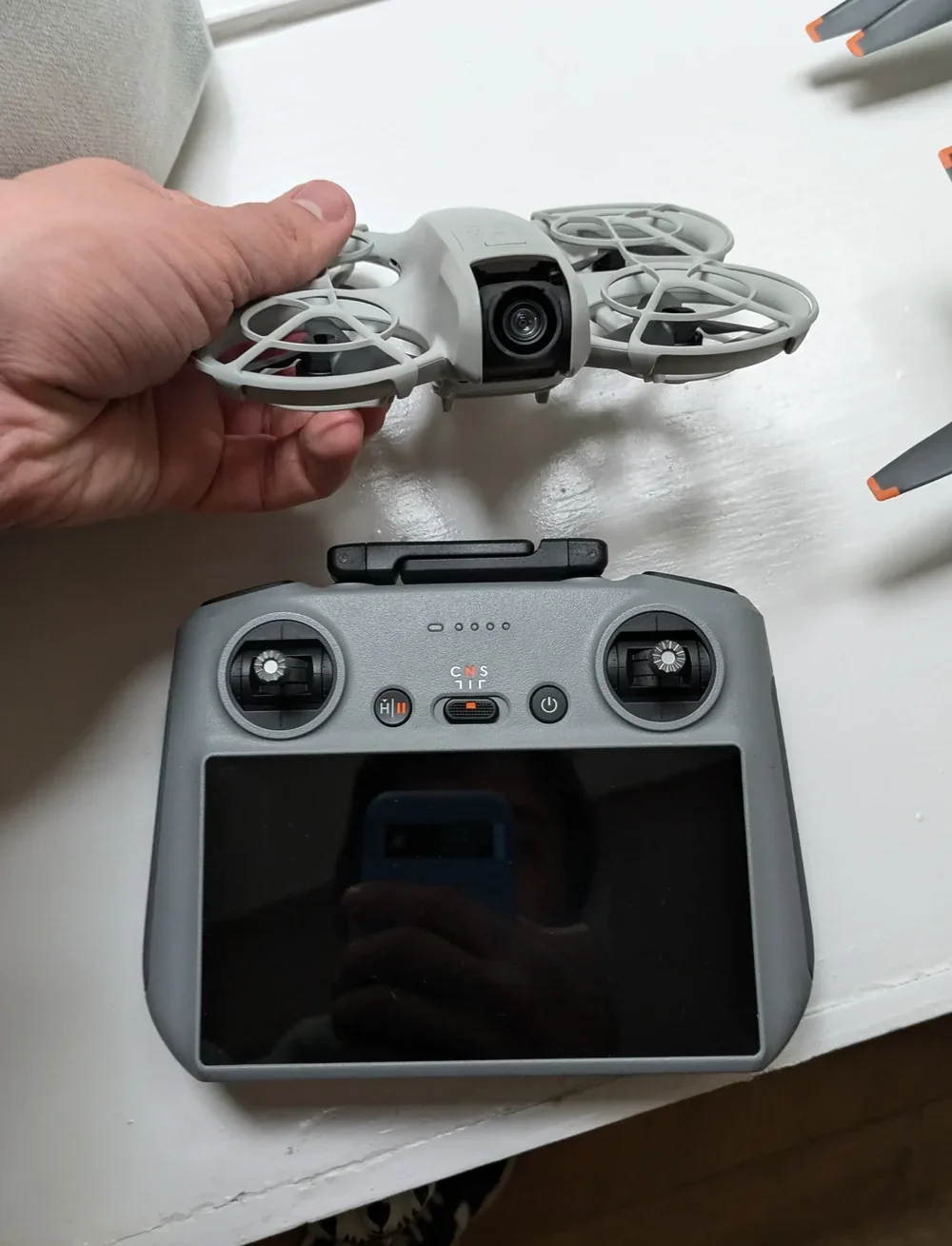
Your neighbour does not need your permission to fly Drone over, but they must follow safety and privacy rules
In the UK, the legal framework around drone flights has a significant nuance many homeowners find surprising: your neighbour technically doesn't need your explicit permission to fly a drone over your garden.
However, this doesn't give drone operators free rein.
They must still comply with Civil Aviation Authority regulations, including keeping the drone in visual line of sight, flying below 400 feet, and staying at least 50 metres away from people and properties they don't have permission to fly over at lower heights.
Your neighbour must also respect your privacy rights.
The Information Commissioner's Office guidelines state that recording or photographing you without consent could violate data protection laws. If your neighbour's drone usage becomes intrusive, harassing, or causes distress, you can report them to local police or the CAA.
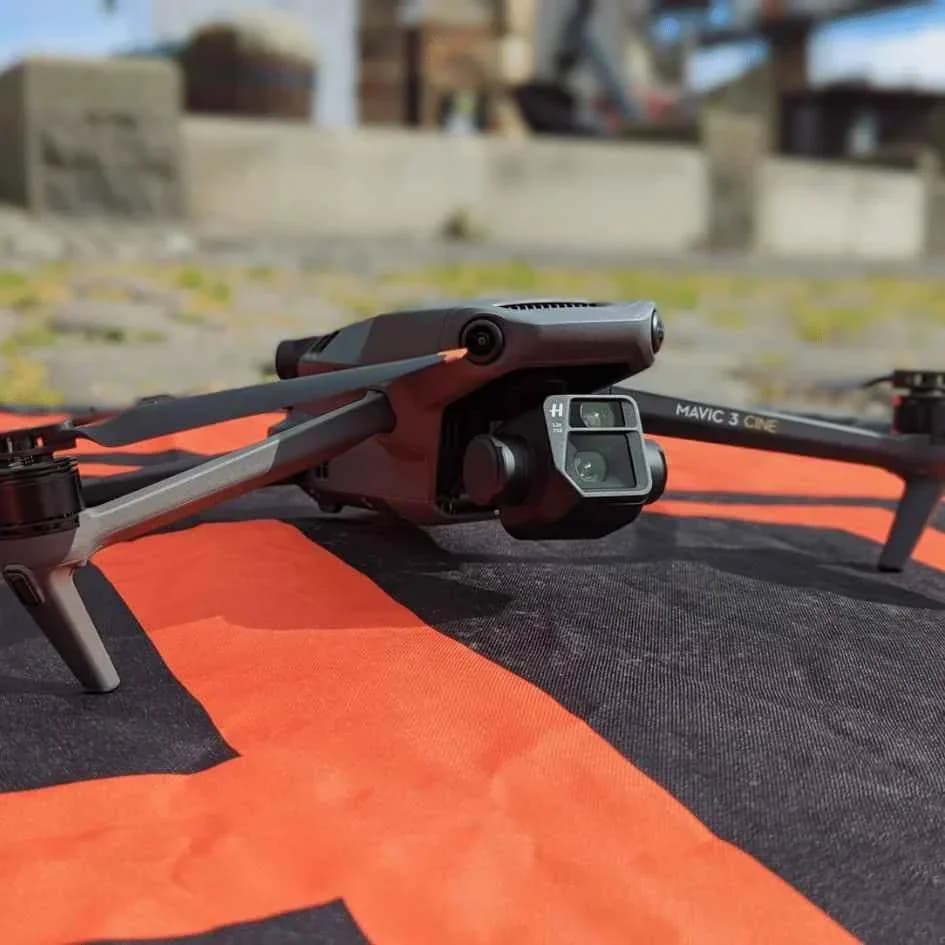
Drones must comply with CAA height and distance restrictions when flying over homes
The Civil Aviation Authority enforces three key distance restrictions that all drone operators must follow when flying near residential properties.
First, drones must stay at least 50 metres away from people, vehicles, and buildings not under the pilot's control. For larger drones weighing over 250g, this extends to 150 metres.
The 50-metre rule is a cornerstone of safe flying in built-up areas. Before I even launch a drone for a job like a drone roof inspection, I'm mapping out the area, identifying potential hazards, and ensuring I can maintain that separation from neighbouring properties. It's not just a guideline; it's a hard limit we have to prove we can adhere to.
Second, drones can't fly higher than the legal drone height limit in the UK of 400 feet (120 metres) above ground level. This height restriction helps prevent interference with other aircraft while maintaining visual line of sight.
Finally, drone pilots must keep their drone within visual range—typically no more than 500 metres horizontally.
If your neighbour's drone violates these rules, you can report them to the CAA or police. Remember that these restrictions apply regardless of whether the drone is being used for recreational purposes or for professional drone operations.
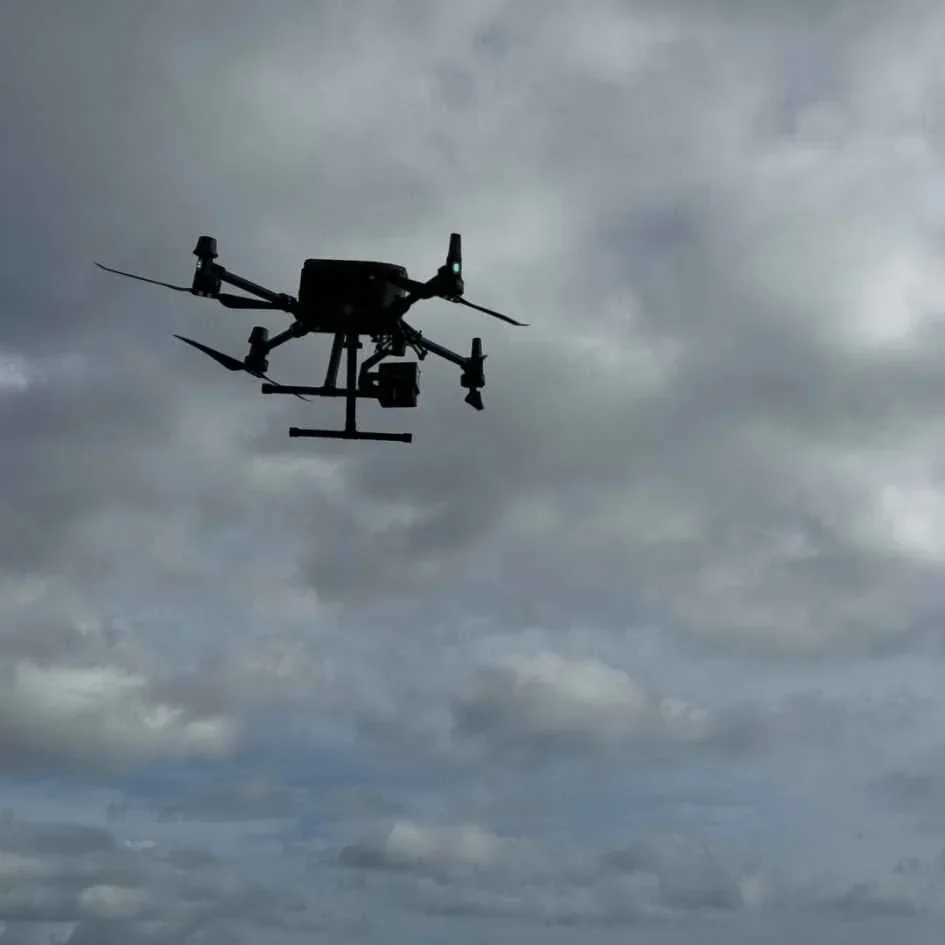
You can take legal action if a drone breaches privacy or causes harassment
Several legal options exist if your neighbour's drone invades your privacy or causes distress.
You can file a complaint under the Protection from Harassment Act 1997 if the drone flying constitutes harassment—typically requiring at least two incidents that cause alarm or distress.
For privacy violations, you can pursue a civil case for breach of privacy or "nuisance" if the drone significantly interferes with your enjoyment of your property. The Data Protection Act 2018 also offers protection if the drone captures images of you, as this constitutes personal data processing, a common consideration for drone photography services.
Before taking legal action, document all incidents with dates, times, and photos if possible. Consider sending a formal letter to your neighbour outlining your concerns. If the situation persists, consult a solicitor specialising in privacy law for guidance on the most appropriate legal remedy.
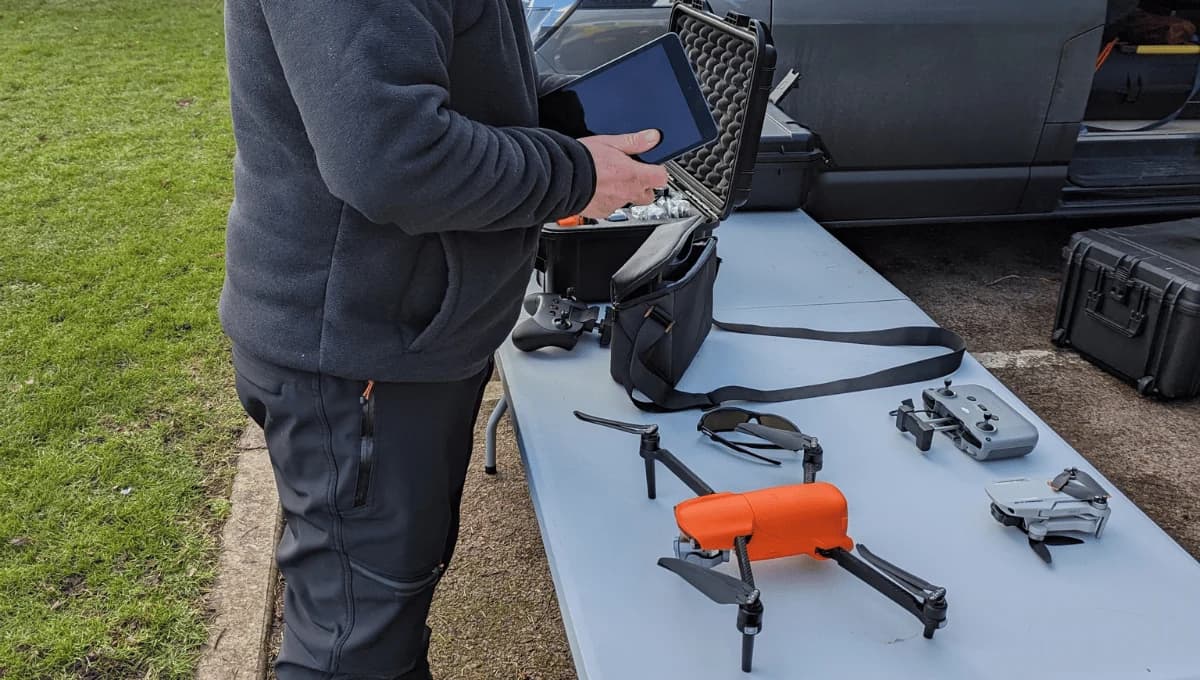
Privacy laws apply if a drone records you or your Garden without consent.
Drone cameras capturing images of you in your garden trigger important privacy protections under UK law. The Data Protection Act 2018 and UK GDPR apply when a drone operator collects identifiable footage of you without permission.
This means your neighbour must have a lawful basis for recording, such as legitimate interest or consent.
From a professional standpoint, privacy is paramount. When we're conducting drone surveys or capturing drone real estate photography, our focus is solely on the subject property. We use techniques like specific camera angles and flight paths to avoid capturing identifiable information from neighbouring gardens. Accidentally filming a neighbour is a situation every professional drone pilot actively avoids. It's unprofessional and opens us up to serious legal issues.
If someone's drone records you sunbathing, playing with your children, or simply relaxing in what you reasonably consider a private space, they're likely violating your privacy rights. The Information Commissioner's Office (ICO) can fine operators who misuse personal data collected by drones.
You're entitled to request copies of any footage featuring you, and operators must comply with this Subject Access Request. They must also delete footage if you withdraw consent or if they no longer have a valid reason to keep it.
Frequently Asked Questions
Can I Legally Shoot Down a Drone Flying Over My Garden?
No, you can't legally shoot down a drone flying over your garden. Doing so would violate multiple UK laws, including criminal damage to property, firearms offenses, and potentially endangering others. Instead, you should read our guide on how to stop drones flying over your property. The drone operator must follow UK drone regulations, but destroying their property isn't a lawful response regardless of the intrusion.
How Do I Identify Who Owns a Drone Flying Above My Property?
To identify a drone owner, write down the date, time, and drone description, then report it to the police or the Civil Aviation Authority. You can use the CAA's "Drone Assist" app for reporting. Take photos if possible, but never interfere with the drone physically. Also, check if neighbors have seen who's operating it or ask nearby drone users directly, our guide on how to identify a drone operator may help.
What Evidence Do I Need to Report Drone Harassment?
To report drone harassment, you'll need photos or videos of the drone, date/time logs of incidents, and any details about the operator if possible. Record the drone's flight pattern and frequency of appearances. Note any privacy violations or disruptions caused. Contact the police on 101 for non-emergencies or report to the Civil Aviation Authority with your evidence through their website.
Are There Drone-Free Zones Where Flights Are Completely Prohibited?
Yes, there are drone-free zones in the UK. You can't fly drones within 5km of airports, military bases, and prisons. They're also prohibited in restricted airspace over government buildings and critical infrastructure. Many national parks restrict drone use, and temporary flight restrictions may apply during major events. The Civil Aviation Authority maintains an updated map of these no-fly zones through their Drone Assist app and website.
Can I Install Anti-Drone Technology to Protect My Garden?
No, you can't legally install anti-drone technology in your garden. In the UK, it's illegal for civilians to use jammers or other anti-drone systems as they interfere with radio frequencies, which violates wireless telegraphy laws. You can learn more in our guide about whether drone jammers are legal in the UK. Instead, report privacy concerns to the police or Civil Aviation Authority if a drone is persistently flying over your property.
Conclusion
While your neighbour can legally fly a drone over your garden, they must follow strict CAA regulations.
If their drone activity invades your privacy or becomes harassment, you've got options. You can report violations to the CAA, speak directly with your neighbour, or pursue legal action under privacy laws.
Remember, everyone has the right to enjoy their property without unreasonable interference from others.
About the Author

Written by
Peter Leslie
Peter Leslie is a CAA-approved commercial drone pilot with 10+ years experience and over 10,000 flight hours. He holds the GVC and A2 CofC drone licences with full CAA Operational Authorisation. Peter is a member of ARPAS-UK, the UK's non-profit trade association for the drone industry. He founded HireDronePilot to connect UK businesses with qualified, insured drone operators.
Looking for More Drone Work?
Join the UK's leading network of professional drone pilots and grow your business.
Open Access
Bid on any job - all jobs open to all pilots
Grow Revenue
Access high-value commercial projects
Stay Busy
Fill your schedule with regular work
Related Articles

Our Drone Survey Service In Stirling, Scotland
Bringing you Stirling drone survey data from areas no one else can fly.

How Much Does A Drone LiDAR Survey Cost
Forecasting your drone LiDAR survey cost requires understanding what's hidden beyond the initial quote.

Step By Step Process Of Drone LiDAR Survey
Next, discover the crucial post-flight steps that determine your survey's success.
